Running Back Instincts: Part Two

Editor’s Note: This article is a Dynasty Scouts exclusive. Remember, our Dynasty Scouts section focuses on the stars of tomorrow, with a laser focus on High School recruits and College players who look to have the talent to be future assets in dynasty leagues and have value today in devy leagues.
Football is an extremely physical game and is decided by inches. However, these inches appear in many different facets such as a step in the wrong direction. One false step can cause a defender to give up a touchdown or a running back to get tackled in the backfield. These inches can also be measured in balance and delivering a powerful blow at the right time. In this installment of the Running Back instincts series I will be discussing how backs initiate contact to gain yardage and changing their running angles to get by defenders.

This is an extremely memorable play for Houston Texans fans from a playoff game versus the Bengals. Arian Foster is running down the sideline and being heavily pursued. One defender (blue circle) has the angle (blue arrow) and will make sure Foster can’t out run them to the end zone. Another defender (red circle) is trailing close behind and it looks like Foster will only gain a few more yards on the play.
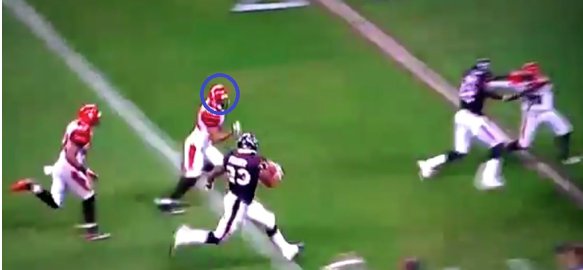
Foster slows down and lets the defender (blue circle) fly by him instead of going out of bounds.
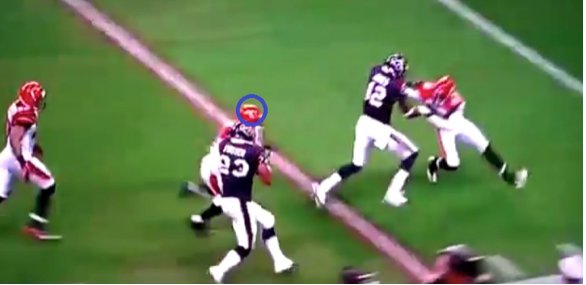
A few yards later the defender (blue circle) attempts to match Foster by slowing down as well. But Foster sees an opportunity to catch the defender off guard and he initiates contact with a powerful stiff arm. He doesn’t just stiff arm the defender, but pushes him forward the way his momentum is taking him.
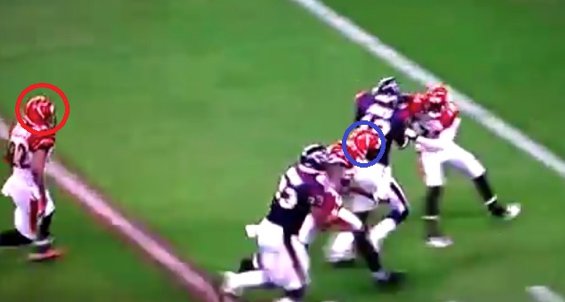
Foster continues to push the defender off balance and it’s gaining him valuable yards in a playoff game. Meanwhile, the other defender (red circle) continues to loaf (sorry, coaching pet peeve there.)

At this point, the defender looks more like he’s boxing out in basketball versus trying to tackle a ball carrier. Foster continues using leverage to his advantage and will eventually score a touchdown on this play by pushing the defender. It was an incredible play by Foster that very few running backs could accomplish, but he saw an opportunity and went after it. I also want to point out that Jacoby Jones held his block for a long time here and pushed his defender back to the inside which allowed for the touchdown opportunity. I hope Foster took him out for a steak dinner that night. Watch the entire play here.
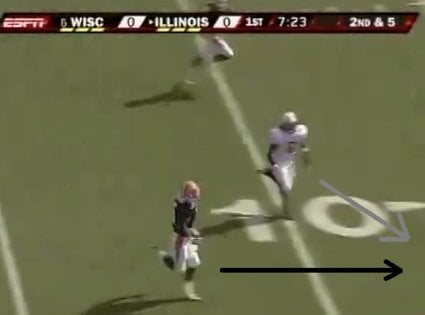
Next let’s look at just a small part of a Rashard Mendenhall run while at the University of Illinois. Mendenhall has gained 20 yards already on this well executed speed option play. However, he wants to cap off the play with a touchdown and only one defender stands in his way. The defender has the angle (gray arrow) on Mendenhall, who’s running full speed (black arrow).

Four yards later reveals that Mendenhall can’t simply outrun the defender and he needs to do something to ensure his team gets a touchdown.

Mendenhall stiff arms and leans into the defender and initiates contact (black arrow). He does this while his momentum is still carrying him forward, which makes him off balance. However, after the contact it puts Mendenhall back in balance more than his defender. The defender has lost leverage and momentum due to this action and will be hanging on for a ride to the end zone. Mendenhall may have scored a touchdown without doing this action; however he wanted to leave no doubt about scoring. Most runners would’ve tried to stiff-arm, but leaning and initiating contact is what sets this play apart. Watch the entire play here.
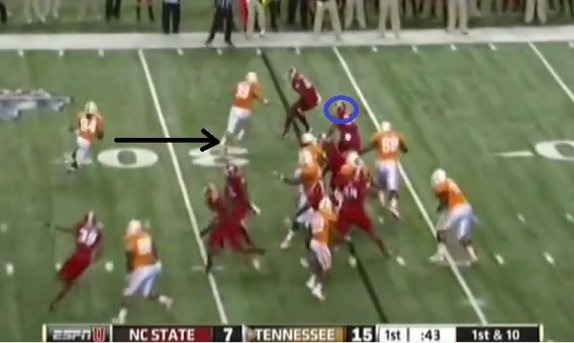
The next play we’re going to dissect is a reverse from Cordarrelle Patterson while he attended the University of Tennessee. I imagine people are saying “Wait, this is a running back instincts article!” Yes it is, however Patterson has some of the best instincts I’ve ever seen running with the football. If you’re interested in Patterson’s elusiveness statistics while at Tennessee, I recommend you read my article. Patterson is a few strides into taking the handoff and decides to cut up field (black arrow). He’s trying to beat the defender (blue circle) through the hole.

Only one stride later, Patterson changes his mind because he can’t beat the defender (blue circle) through the hole. Instead, he cuts to the outside (black arrow) to widen both the defender being blocked (yellow circle) and the defender in the original hole (blue circle).
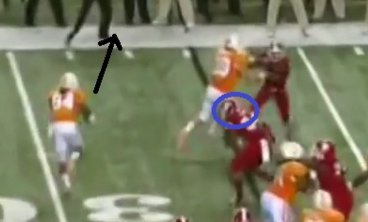
It’s easy to see that the defender (blue circle) is out of position now that Patterson changed his running angle.

Now Patterson cuts up field for a second time (black arrow), but the defender (blue circle) is unable to make the tackle. The second thing Patterson does by changing his initial running angle comes into focus at this point. The defender being blocked (red circle) has widened about a yard to maintain his outside leverage and force the runner back inside. This widened the original hole and allowed for Patterson to sneak through.
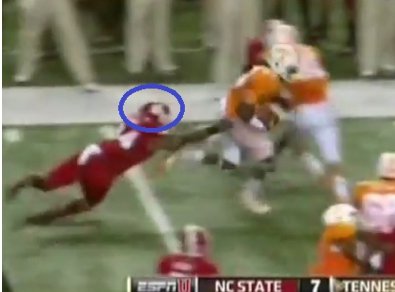
The finished product of Patterson changing his angle is getting through the hole with only a weak hand tackle attempt by the defender (blue circle). The end result of this run is a touchdown by Patterson after he makes more nifty cuts back across the field. However, I wanted to point out that one subtle change in a running angle allowed Patterson to get through a hole he otherwise had no business passing through. Here is the entire play.
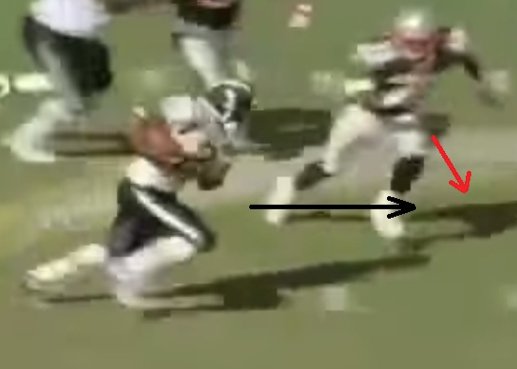
We’re going to pick this play up after LaDainian Tomlinson is running through the second level of the Patriots defense. He has a defender closing in on him and has a great angle (red arrow) to make the play on Tomlinson’s path (black arrow).
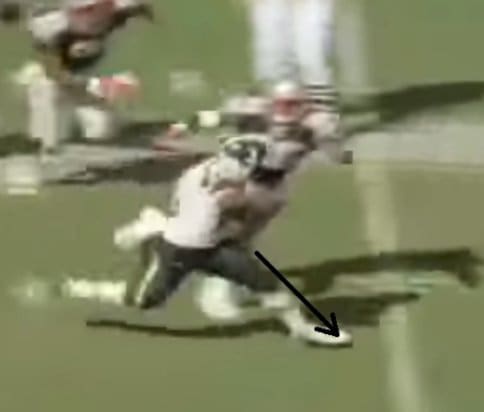
Tomlinson changes his running angle (black arrow) only a split second later with a nice cut and stiff arms the defender.

The result of the play has the defender flying to the ground with Tomlinson completely under control and legs churning for more yards. Subtle changes in running angles can be deadly for a running back in the open field.
It always amazes me how these backs seem so graceful doing some very difficult tasks. Changing directions and staying upright, while defenders are flailing all over the place or falling down due to a stiff arm. Make sure you check into the next installment when I start revealing running back instincts in devy prospects for the 2015 NFL Draft.
Follow @_NickWhalen on Twitter
- Dynasty Capsule: Chicago Bears - February 1, 2017
- Dynasty 101: Trading - September 5, 2016
- Summer Sleeper: Chicago Bears - August 19, 2016

































































